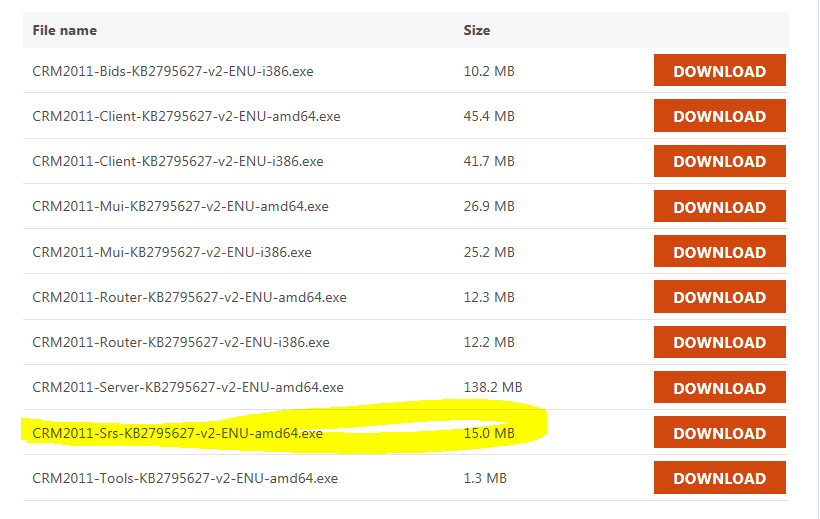There are many reasons why you might get the “Report cannot be displayed” error message for custom reports and/or out of the box reports in Microsoft Dynamics CRM. If you are getting this message for out of the box reports and custom reports, then the issue is most likely related to an issue with SRS Connector for Dynamics CRM component. This component gets installed on the server that is hosting the Dynamics CRM reports (and SQL Reporting Services). First, make sure SQL reporting services is running. Many times, the issue is actually with SSRS rather than anything to do with Dynamics CRM proper. You can check to see if SSRS is running by going to the SQL server and going to (Start>>Programs>>Microsoft SQL Server {version}>>Configuration Tools>>Reporting Services Configuration Manager>>Connect) and you’ll see whether the service is running or not on the main screen. Another relatively painless thing to try is to re-install (uninstall, then install again) the component on your SQL server. This will re-deploy the out of the box reports to your CRM server and re-establish the connector and data sources. The data source issue can occur if you get something like an encryption key problem when accessing the report manager or any SSRS report. There are many links out there that address this specific problem.
If you have recently upgraded your on premise Dynamics CRM 2011 to UR12, you might have a different issue. Make sure that you have upgraded the SRS component for the UR12 upgrade and if you have a separate SQL server, make sure you’ve installed the SRS update on that server. I recenly had aDynamics CRM client that was using WSUS on their CRM server and the UR12 update was applied automatically, but WSUS was not running on their SQL server and so the update did not occur for the SRS piece and the reports stopped working with the dreaded “Report cannot be displayed” message. See image below to see highlighted downloaded of SRS component to install.
 If you are just having this issue with custom reports, try deleting the report from Dynamics CRM and re-uploading the rdl again. Obviously, make sure you have the source RDL before deleting. We run into this issue all the time, particularly using FetchXML in the dataset. Another thing to try if you’re having an issue with a custom report is undo your most recent changes and layer them back in one at a time until you find out what caused the break. Sometimes, I have found that you can preview the report in Visual Studio and it still will not run in Dynamics CRM. Again, try the delete, re-deploy method first, then try the “trial and error” method.
If you are just having this issue with custom reports, try deleting the report from Dynamics CRM and re-uploading the rdl again. Obviously, make sure you have the source RDL before deleting. We run into this issue all the time, particularly using FetchXML in the dataset. Another thing to try if you’re having an issue with a custom report is undo your most recent changes and layer them back in one at a time until you find out what caused the break. Sometimes, I have found that you can preview the report in Visual Studio and it still will not run in Dynamics CRM. Again, try the delete, re-deploy method first, then try the “trial and error” method.
The RSM Dynamics CRM consultants have a diverse skill set in configurations and customizations, averaging 15+ years of CRM experience. If you have any questions with implementation or are looking for a new CRM system, contact our professional at 855.437.7202.
By: Bill Caldwell – Colorado Microsoft Dynamics CRM partner

 RSMUS.com
RSMUS.com